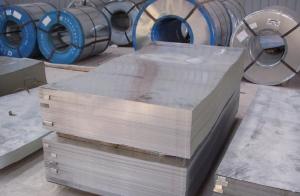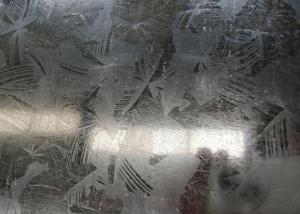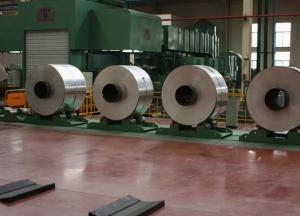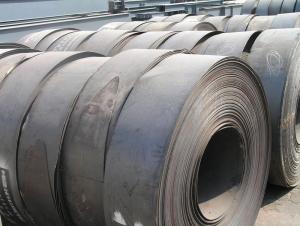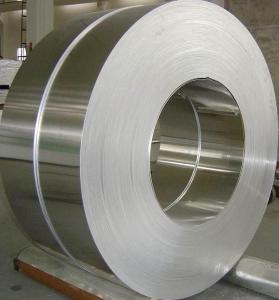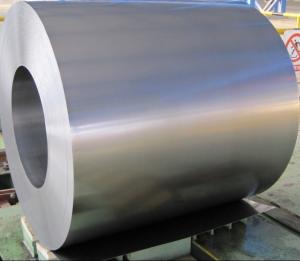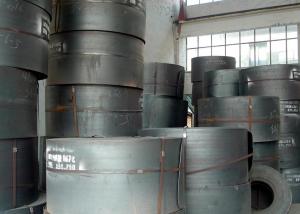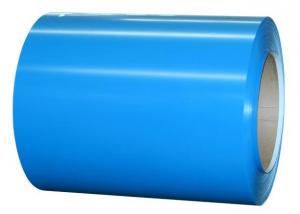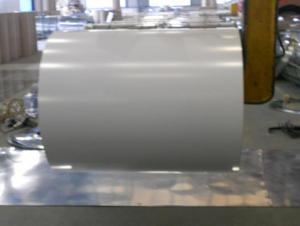Best Quality for Regular Spangle Hot Dipped Galvanized Steel Sheet
- Loading Port:
- China Main Port
- Payment Terms:
- TT or LC
- Min Order Qty:
- 50mt m.t.
- Supply Capability:
- 10000 tons per month m.t./month
OKorder Service Pledge
OKorder Financial Service
You Might Also Like
General Information of Hot Dip Galvanized Steel Coil
Hot-dip galvanized steel coils are available with a pure zinc coating through the hot-dip galvanizing process. It offers the economy, strength and formability of steel combined with the corrosion resistance of zinc. The hot-dip process is the process by which steel gets coated in layers of zinc to protect against rust. It is especially useful for countless outdoor and industrial applications.
Specification of Hot Dip Galvanized Steel Coil:
1. Thickness: 0.13mm-0.7mm
2. Width: 600mm-1250mm
3. Zinc Coating: 30-200g/m2
4. Internal Diameter: 508mm/610mm
5. Coil Weight: 3-12MT
6. Quality: commercial and structural quality
7. Surface Treatment: regular & minimum spangle, zero spangle, oiled & dry , chromated , non-skin pass ,skin pass
8. Standard: JIS G 3302, ASTM A 653M, EN 10327
9. Steel Grade: SGCC, CS, FS, SS, LFQ, DX51D+Z , S280GD
Technical Data of Hot Dip Galvanized Steel Coil
Chemical Composition | C | Si | Mn | P | S |
0.04-0.06% | 0.01-0.03% | 0.18-0.22% | 0.014-0.016% | 0.006%-0.009% |
Technical Data | |
Yield Strength | (Mpa) 280-320 |
Tensile Strength | (Mpa) 340-390 |
Elongation | 20%-30% |
Out-of-square | not exceed 1% Flatness |
Bow | 15mmmax |
Edge Wave | 9mmmax |
Centre Buckle | 8mmmax |
Bending At 180 Degree | No crack, purling and fraction |
Application of Hot Dip Galvanized Steel Coil
It can be widely used in transportation, light industry, civil usage and farming. It is also the perfect building material in construction for making roofing tile, steel profiles for wall partition, T-bar, studs, fireproof door, air conditioning duct and home appliance.
Package of Hot Dip Galvanized Steel Coil
Full wrapped with anti-damped paper inside, iron sheet wrapped outside, and bundled by iron strips.
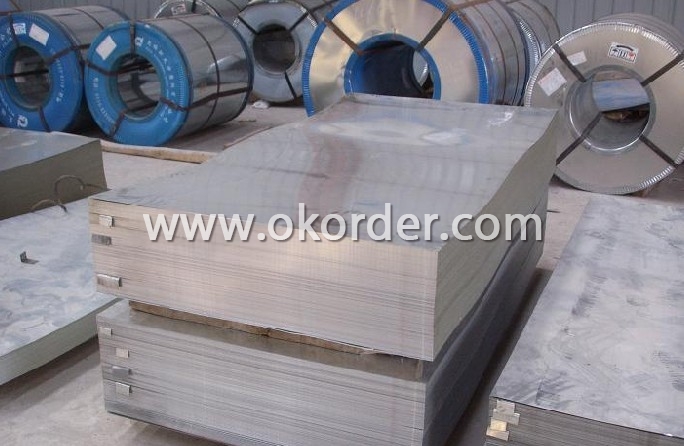

- Q:How are steel products used in the construction of theme-based art and craft studios?
- Steel products are commonly used in the construction of theme-based art and craft studios for their durability, strength, and versatility. They are commonly used for structural elements such as beams and columns, ensuring the stability and safety of the studio. Steel is also used for creating artistic features like sculptures, installations, and decorative elements due to its malleability and ability to be shaped into intricate designs. Additionally, steel products are used for fixtures and fittings, providing support for shelves, workbenches, and storage systems. Overall, steel products play a crucial role in the construction of theme-based art and craft studios, enhancing both the functionality and aesthetic appeal of the space.
- Q:What are the factors to consider when selecting the appropriate steel grade for welding?
- There are several factors to consider when selecting the appropriate steel grade for welding. Firstly, the intended application and the specific requirements of the project should be taken into account. This includes factors such as the desired strength, corrosion resistance, and toughness of the welded joint. Additionally, the welding process itself plays a crucial role in the selection of steel grade. Different steel grades may have varying weldability and may require specific pre- and post-weld heat treatments. Furthermore, factors like cost, availability, and compatibility with other materials being used in the project should also be considered. Ultimately, a thorough understanding of these factors will help in choosing the most suitable steel grade for welding.
- Q:What are the advantages of using steel plates in manufacturing?
- There are several advantages to using steel plates in manufacturing. Firstly, steel plates have high strength and durability, making them ideal for applications that require robust materials. Secondly, steel plates offer excellent resistance to corrosion, ensuring their longevity and suitability in various environments. Additionally, steel plates have good formability, allowing for customization and shaping to meet specific manufacturing requirements. Lastly, steel plates are readily available and cost-effective, making them a cost-efficient choice for many manufacturing processes.
- Q:How is steel used in the railway industry?
- Steel is used extensively in the railway industry due to its strength and durability. It is used in the construction of railway tracks, bridges, and tunnels, as well as in the manufacturing of train components such as wheels, axles, and frames. Additionally, steel is used in the fabrication of locomotives and rolling stock, ensuring the safety and reliability of the railway system.
- Q:What are the common applications of steel products in the automotive industry?
- Steel products are widely used in the automotive industry for various applications such as body panels, chassis, engine components, and structural supports. Steel's high strength, durability, and cost-effectiveness make it an ideal material for these purposes. Additionally, its ability to be easily formed, welded, and recycled further enhances its suitability for automotive applications.
- Q:What are the different types of steel forgings and castings available?
- There are several types of steel forgings and castings available, including carbon steel, alloy steel, stainless steel, and tool steel. Each type has its own unique properties and characteristics, making them suitable for various applications in different industries. Carbon steel forgings and castings are known for their strength and durability, while alloy steel offers enhanced strength, toughness, and resistance to corrosion. Stainless steel forgings and castings are highly resistant to rust and staining, making them ideal for applications in the food and medical industries. Lastly, tool steel forgings and castings are specifically designed for their high hardness and wear resistance, making them suitable for cutting, shaping, and forming tools.
- Q:What are the properties of high-strength steel for structural applications?
- High-strength steel for structural applications possesses several key properties. Firstly, it has a significantly higher yield strength compared to conventional steel, allowing it to withstand higher loads and stresses without deforming permanently. Additionally, it exhibits excellent toughness and ductility, ensuring it can absorb energy and resist fracture even under extreme conditions. High-strength steel also offers improved corrosion resistance, reducing the risk of deterioration over time. Lastly, it has a relatively low weight-to-strength ratio, making it an ideal choice for lightweight and high-performance structures.
- Q:What are the different types of steel coatings?
- There are several types of steel coatings available, including galvanized, aluminized, zinc-nickel, epoxy, polyurethane, and polyvinylidene fluoride (PVDF) coatings. Each type offers unique properties and benefits, such as enhanced corrosion resistance, improved durability, and increased aesthetic appeal. The choice of coating depends on the specific application and desired outcome.
- Q:What are the different types of steel rails and their applications in the railway industry?
- There are primarily three types of steel rails used in the railway industry: plain carbon steel rails, head-hardened rails, and composite rails. Plain carbon steel rails are the most common type and are widely used for general railway tracks. They offer good strength, durability, and affordability, making them suitable for most applications. Head-hardened rails are heat-treated to increase their hardness and wear resistance. These rails are commonly used in high-speed and heavy-haul tracks where the forces and wear are more significant. Head-hardened rails reduce the maintenance requirements and offer a longer lifespan compared to plain carbon steel rails. Composite rails are a combination of different materials, typically steel and other alloys. These rails are used in specific situations where additional properties are required, such as increased strength, reduced noise, or improved resistance to extreme temperatures. Overall, the choice of steel rail depends on factors like the expected traffic load, speed, and environmental conditions. The railway industry carefully selects the appropriate type of steel rail to ensure safe and efficient operations.
- Q:How are steel products used in the construction of exhibition halls and convention centers?
- Steel products are commonly used in the construction of exhibition halls and convention centers due to their strength, durability, and versatility. They are used for structural elements such as columns, beams, and trusses, providing support and stability to the entire structure. Steel is also used in the fabrication of roofs, walls, and facades, offering a sleek and modern aesthetic. Additionally, steel products are employed in the construction of mezzanine floors, staircases, and walkways, enhancing the functionality and accessibility of the venues. Overall, steel plays a crucial role in ensuring the safety, longevity, and functionality of exhibition halls and convention centers.
1. Manufacturer Overview |
|
|---|---|
| Location | Zhejiang, China |
| Year Established | 1999 |
| Annual Output Value | US$1 Million - US$2.5 Million |
| Main Markets | Europe; Africa; Mid East; Southeast Asia |
| Company Certifications | ISO9001;ISO14001 |
2. Manufacturer Certificates |
|
|---|---|
| a) Certification Name | |
| Range | |
| Reference | |
| Validity Period | |
3. Manufacturer Capability |
|
|---|---|
| a)Trade Capacity | |
| Nearest Port | Shanghai Port |
| Export Percentage | 41% - 50% |
| No.of Employees in Trade Department | 50-80 |
| Language Spoken: | Chinese, English |
| b)Factory Information | |
| Factory Size: | Above 100,000 square meters |
| No. of Production Lines | 5 |
| Contract Manufacturing | OEM Service Offered |
| Product Price Range | Average |
Send your message to us
Best Quality for Regular Spangle Hot Dipped Galvanized Steel Sheet
- Loading Port:
- China Main Port
- Payment Terms:
- TT or LC
- Min Order Qty:
- 50mt m.t.
- Supply Capability:
- 10000 tons per month m.t./month
OKorder Service Pledge
OKorder Financial Service
Similar products
New products
Hot products
Hot Searches
Related keywords
